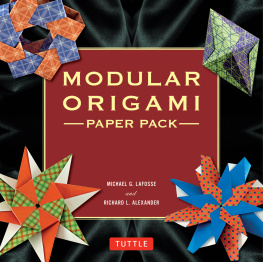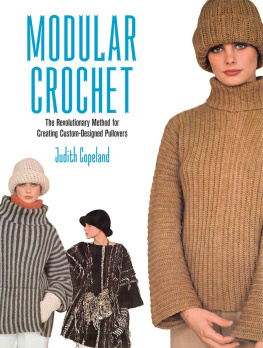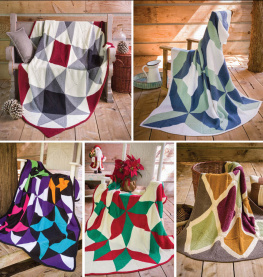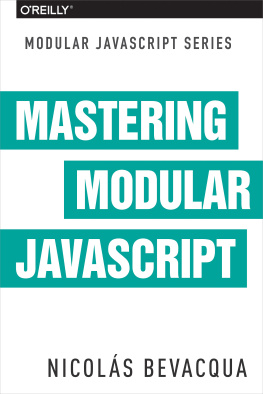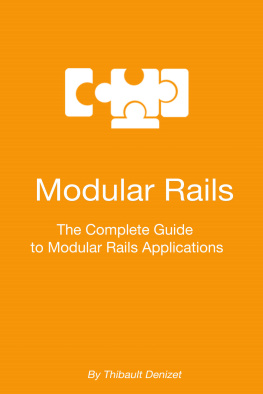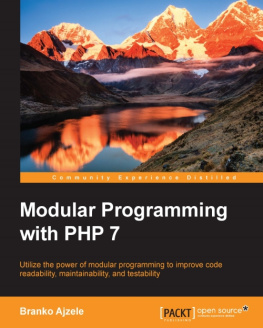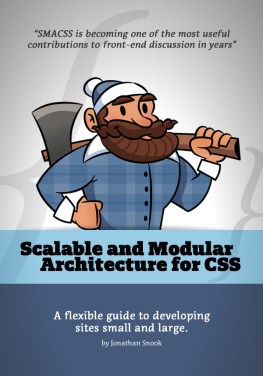Andrew Gianino - The Modular Home
Here you can read online Andrew Gianino - The Modular Home full text of the book (entire story) in english for free. Download pdf and epub, get meaning, cover and reviews about this ebook. year: 2012, publisher: Storey Publishing, LLC, genre: Home and family. Description of the work, (preface) as well as reviews are available. Best literature library LitArk.com created for fans of good reading and offers a wide selection of genres:
Romance novel
Science fiction
Adventure
Detective
Science
History
Home and family
Prose
Art
Politics
Computer
Non-fiction
Religion
Business
Children
Humor
Choose a favorite category and find really read worthwhile books. Enjoy immersion in the world of imagination, feel the emotions of the characters or learn something new for yourself, make an fascinating discovery.

- Book:The Modular Home
- Author:
- Publisher:Storey Publishing, LLC
- Genre:
- Year:2012
- Rating:5 / 5
- Favourites:Add to favourites
- Your mark:
- 100
- 1
- 2
- 3
- 4
- 5
The Modular Home: summary, description and annotation
We offer to read an annotation, description, summary or preface (depends on what the author of the book "The Modular Home" wrote himself). If you haven't found the necessary information about the book — write in the comments, we will try to find it.
Modular homes are the perfect solution if you want to build a high-quality, customized home without undue expense or hassle. In this informative guide, Andrew Gianino helps you make the best choices throughout the modular building process, with suggestions for everything from choosing the right dealer and contractor to setting the specs, price, and schedule. Whether youre looking for a cozy Victorian or want to add a personal touch to a wide ranch, theres a modular home that will fit your tastes, lifestyle, and budget.
The Modular Home — read online for free the complete book (whole text) full work
Below is the text of the book, divided by pages. System saving the place of the last page read, allows you to conveniently read the book "The Modular Home" online for free, without having to search again every time where you left off. Put a bookmark, and you can go to the page where you finished reading at any time.
Font size:
Interval:
Bookmark:
Andrew Gianino

The mission of Storey Publishing is to serve our customers by publishing practical information that encourages personal independence in harmony with the environment.
Edited by Jeff Beneke
Art direction and design by Kent Lew and Cynthia McFarland
Text production by Erin Dawson
Cover photographs courtesy of Rob Coolidge, Architect: front cover right and bottom left; courtesy of The Home Store/Melanie Poisson: front cover top left and back cover.
Illustrations by Terry Dovaston and Associates and Glenco, Inc.
Indexed by Susan Olason, Indexes & Knowledge Maps
2005 by Andrew Gianino
Ebook version 2.0
May 21, 2015
All rights reserved. No part of this book may be reproduced without written permission from the publisher, except by a reviewer who may quote brief passages or reproduce illustrations in a review with appropriate credits; nor may any part of this book be reproduced, stored in a retrieval system, or transmitted in any form or by any means electronic, mechanical, photocopying, recording, or other without written permission from the publisher.
The information in this book is true and complete to the best of our knowledge. All recommendations are made without guarantee on the part of the author or Storey Publishing. The author and publisher disclaim any liability in connection with the use of this information.
Storey books are available for special premium and promotional uses and for customized editions. For further information, please call 1-800-793-9396.
Storey Publishing
210 MASS MoCA Way
North Adams, MA 01247
www.storey.com
To my wife and parents for their unflagging love and support.
My editor, Jeff Beneke, did a remarkable job making the book more readable. Those of you who think the book is too long owe a special thanks to Jeff, since it would have been 25% longer without his sharp editing. I would also like to thank Sarah Guare, from Storey Publishing. Her patience and easy manner made the final revisions a surprisingly pleasant experience. Special thanks are also owed to Jan Gianino, my dear wife, and Bonnie Bandolin, my bookkeeper turned book reviewer, for their editorial assistance.
Several people gave me helpful criticism about the content of the book. I would especially like to thank Joe Muldowney of Manorwood Homes, Dave Wrocklage of Epoch Homes, Mark Kelly of the Hickory Consortium, and Michael Mullens of the University of Central Florida. Somehow these people found the time to read the entire book before it was edited. I would also like to thank several people from my company, The Home Store, for their feedback: Karen Markert, Chet Mitchell, James Kitchen, Dan Newbury, Layne Floyd, Brian Holmes, and David Walbridge.
The following gave me a better understanding of the options for financing the construction of a modular home: Mark Butler of Salem Five, Tracy Egloff of Northampton Cooperative Bank, Chris Eugin of Greenfield Cooperative Bank, Lori Grover of Greenfield Savings Bank, Scott Hanley of Citizens Bank, Denise Laizer of Easthampton Savings Bank, Jeff Smith of Florence Savings Bank, and Dave Williams of The Bank of Western Massachusetts.
Id like to thank John Glenny of Glenco, Inc., Gordon Swift, and Layne Floyd for their invaluable assistance with the illustrations. I would also like to express appreciation to all of the modular manufacturers who provided photographs for the book. They are cited in the photo gallery section.
Finally, I would like to thank several people for their help in making The Home Store possible, since without their kind assistance Id probably have returned to child psychology and this book would never have been written: my wife and her parents Jan Gianino and Norma and Bill Robison; my sister and brother-in-law Diane and Rusty Shattuck; two modular manufacturer presidents Ed Langley and Barry Shein; two modular manufacturer general managers Doug Stimpson and Joe Muldowney; two modular manufacturer sales representatives Wil Sormrude and Janice Willits; two Home Store GCs Doug Blowers and Layne Floyd; two bankers Chris Eugin and Charlene Golonka; several subcontractors and vendors Amherst Woodworking, Atlas Overhead Door, Czar Distributing, Deerfield Valley Crane, D.M.O. Construction, Mr. Gutter, Rugg Lumber, and Valley Concrete; one set crew Doug Pease and his team; and all those Home Store employees who were with me through thick and thin for several years Gordon Swift, Dick Wood, Brian Holmes, Karen Markert, Chet Mitchell, Jen Perry, Mark DeMarco, Mike Barna, Butch Dodge, Amy Szalony, Bonnie Bandolin, and Patrick Falla.
WHEN I STARTED SELLING modular homes in 1986, I was a complete novice about home building. I had never constructed a home in my life, not even a tree house as a boy. As an undergraduate student, I studied political science a far cry from construction. I then went on to earn my PhD in psychology, with a focus on child psychotherapy and infant social development. In short, I was trained to be a child therapist and infant researcher, not a home builder.
In 1986, my wife and I decided to invest some money into building a home for resale. When we discovered that all of the good builders were booked for the next 18 months and the available contractors were inexperienced yet charging the same as the good ones, we turned to modular homes. In our conversations with friends, we learned that many others were having the same problem. It was impossible to find a good builder to construct a quality home at an affordable price. We concluded that a better alternative than building one home was to become a representative of a modular manufacturer so we could sell homes to everyone who needed them.
At first, we did this as a part-time venture. Over the course of 18 months I came to realize that building homes was more enjoyable to me than infant research and less stressful than working with severely disturbed children and families. Given the challenges of selling 100 homes a year, I sometimes wonder how I came to that conclusion. My PhD in psychology didnt prepare me to be a builder, any more than if I had been a librarian, machinist, or attorney. I didnt know a 24 from a roof truss. In fact, I had never heard of either, nor had I known about modular homes until six months before I became a dealer.
Why should my early ignorance give you comfort about this book, rather than concern? Because after 18 years in business, I now know most of the things you should know about buying a modular home and probably dont. I learned these things while teaching myself, which I needed to do so I could help my customers.
When I first started talking to customers, I was stunned by how much we both needed to know. It seemed there were more technical terms in construction, more industry jargon, than in psychology, and thats saying a lot. In addition to understanding modular construction, I had to acquire some working knowledge of general contracting and the individual construction trades, from site work and foundations to plumbing, electrical, heating, and carpentry. I also had to learn about real estate, building permits, and construction loans. To realize how much there is to master, consider that it takes professionals years to become experts in each one of these fields.
My first few months of self-education were particularly stressful because I was supposed to be helping my customers carry out their responsibilities. Most of them, like most of you, knew very little about residential construction or modular homes. I was the one who was supposed to be the expert, and they couldnt wait several years for me to become one. I was reminded of what the medical interns used to say during their training at one of the hospitals where I worked: See one! Do one! Teach one! In other words, if you see a medical procedure done once, you should be able to do it yourself, which in turn qualifies you to teach it to others. Fortunately, this frightening concept is rarely practiced in the medical field. But Ive certainly seen it adopted in the home-building field, where there isnt enough professional training. And I was one of the guilty practitioners, as I struggled during my first year to educate myself at the same time that I was helping my customers. The only comfort I could take was that few of my local modular competitors seemed to know much more.
Font size:
Interval:
Bookmark:
Similar books «The Modular Home»
Look at similar books to The Modular Home. We have selected literature similar in name and meaning in the hope of providing readers with more options to find new, interesting, not yet read works.
Discussion, reviews of the book The Modular Home and just readers' own opinions. Leave your comments, write what you think about the work, its meaning or the main characters. Specify what exactly you liked and what you didn't like, and why you think so.

